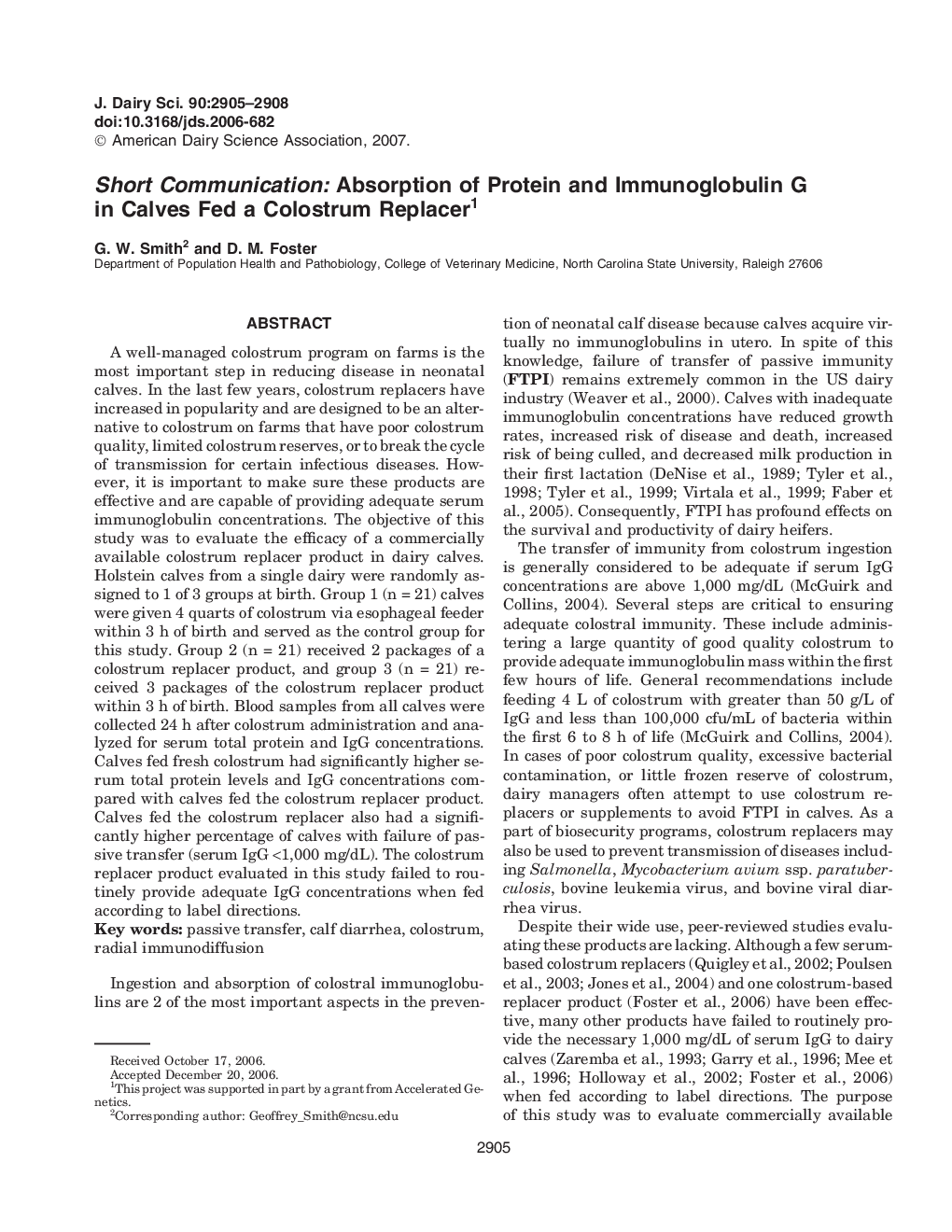| Article ID | Journal | Published Year | Pages | File Type |
|---|---|---|---|---|
| 2440916 | Journal of Dairy Science | 2007 | 4 Pages |
Abstract
A well-managed colostrum program on farms is the most important step in reducing disease in neonatal calves. In the last few years, colostrum replacers have increased in popularity and are designed to be an alternative to colostrum on farms that have poor colostrum quality, limited colostrum reserves, or to break the cycle of transmission for certain infectious diseases. However, it is important to make sure these products are effective and are capable of providing adequate serum immunoglobulin concentrations. The objective of this study was to evaluate the efficacy of a commercially available colostrum replacer product in dairy calves. Holstein calves from a single dairy were randomly assigned to 1 of 3 groups at birth. Group 1 (n = 21) calves were given 4 quarts of colostrum via esophageal feeder within 3 h of birth and served as the control group for this study. Group 2 (n = 21) received 2 packages of a colostrum replacer product, and group 3 (n = 21) received 3 packages of the colostrum replacer product within 3 h of birth. Blood samples from all calves were collected 24 h after colostrum administration and analyzed for serum total protein and IgG concentrations. Calves fed fresh colostrum had significantly higher serum total protein levels and IgG concentrations compared with calves fed the colostrum replacer product. Calves fed the colostrum replacer also had a significantly higher percentage of calves with failure of passive transfer (serum IgG <1,000 mg/dL). The colostrum replacer product evaluated in this study failed to routinely provide adequate IgG concentrations when fed according to label directions.
Related Topics
Life Sciences
Agricultural and Biological Sciences
Animal Science and Zoology
Authors
G.W. Smith, D.M. Foster,
